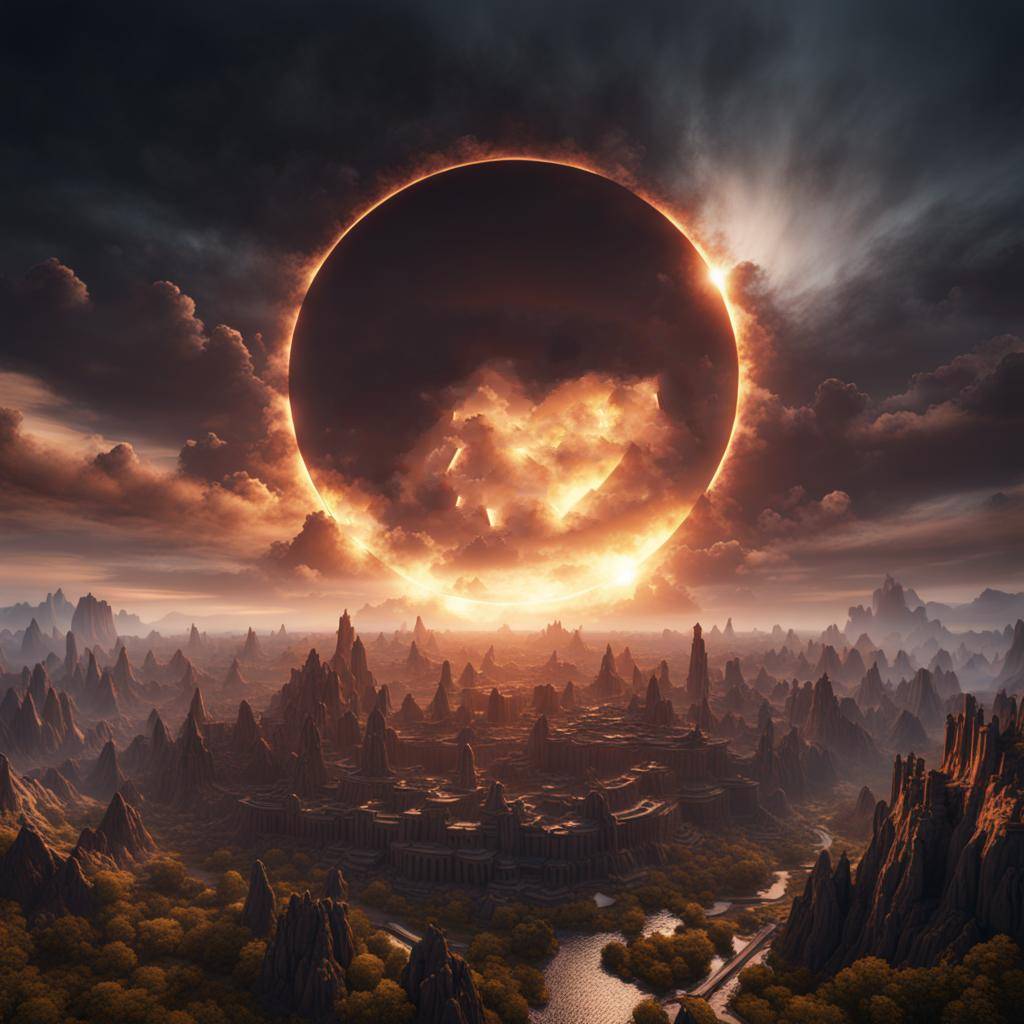In the vastness of our universe, celestial events never cease to amaze us. Two such captivating events are solar eclipses and lunar eclipses. While both involve the alignment of the Sun, Earth, and Moon, they differ in their unique characteristics and mesmerizing visual effects.
What Is An Eclipse?
Lunar eclipses occur when the moon passes into Earth’s dark shadow cone (known as its umbra). Similar to solar eclipses, lunar eclipses come in various types depending on how their components align in space-time at any given moment.
At totality, a lunar eclipse engulfs the Moon into Earth’s umbra and completely eclipsed. At this stage, its surface turns reddish due to Rayleigh scattering of blue light by our atmosphere. Similarly, sunrises and sunsets appear more orange during this phase as well. How much reddish light reflects off of it depends on the dust content of our atmosphere. An eruption just prior to an eclipse can significantly change its brightness and hue!
A solar eclipse occurs when the Moon passes between the Sun and the Earth, temporarily blocking the Sun’s light from reaching certain regions on our planet. This celestial alignment creates a captivating visual spectacle, where the Moon casts a shadow on the Earth’s surface. The primary types of solar eclipses are total, partial, and annular, depending on the alignment and positioning of the celestial bodies.
During a total solar eclipse, the Moon completely covers the Sun, revealing its beautiful corona, a luminous halo surrounding the Sun. This rare phenomenon allows viewers within the path of totality to witness a moment of darkness during the day.
In a partial solar eclipse, the Moon partially covers the Sun, resulting in a crescent-shaped appearance. This type of eclipse is visible from a broader region, allowing spectators to witness a partial dimming of sunlight.
An annular solar eclipse occurs when the Moon is farthest from the Earth, making it appear smaller and unable to fully cover the Sun. As a result, a bright ring, known as the “ring of fire,” is visible around the Moon during the eclipse.
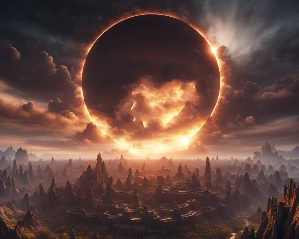
Zodiac
Solar and lunar eclipses can cause seismic shifts in life. Depending on the particulars of your birth chart, these celestial events could have significant ramifications on you personally. Astrology provides valuable insight into how eclipses will influence zodiac traits.
Astrologers believe eclipses are powerful interactions among the Moon, Sun and Earth that occur approximately every six months on average. Additionally, their 19-year cycle means you may witness something similar again in your lifetime.
Eclipses tend to accelerate whatever is taking place in your natal chart that’s controlled by the planet, Sun or Moon that the eclipse touches upon; more dramatic will be its effects when close to such planet.
If you are currently facing career or relationship problems, an eclipse could bring about changes that help resolve them. Some people give the example of placing the final piece of a puzzle into its spot. If your current situation no longer serves your needs, or you feel as though it has outgrown its purpose, the coming eclipse could offer the perfect chance to break free and begin with a fresh start.
Solar eclipses mark beginnings, while lunar eclipses mark endings. But keep in mind that lunar eclipses represent your deepest emotions and unconscious mind. Those with significant Moon placement in their birth chart, especially Leo Suns or Cancer Moons, may feel their effects even more strongly than usual.
Eclipses may bring significant shifts to our current status quo, as well as sparking big new ideas and inspiration. While eclipses may be exciting events to witness first-hand, it is wise to remain grounded by taking time out to reflect upon long-term goals and what matters to you most in life.
Astrologers liken eclipses to “new and full moons on steroids.” So the next time a solar or lunar eclipse occurs, take note of its effect on your natal chart, including when and in what sign or degree it occurs. Try riding out any changes instead of being overwhelmed by them! With practice, you may even develop an understanding of how eclipses impact zodiac traits, so that when change arrives it won’t blindside you!
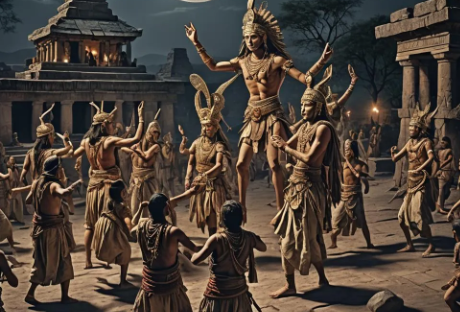
Ancient Civilization Eclipse Beliefs
Before modern science was able to accurately predict eclipses, humans developed all manner of mythologies surrounding the event. Some cultures believed a darkening Sun indicated anger among gods who intended some kind of punishment against mankind.
Other cultures interpreted an eclipse as a moment to celebrate companionship, such as Australian Aborigines who believed the hot female Sun and cold male Moon were married, and eclipses were an opportunity for them to reconnect. Meanwhile, Chippewa people from northern Oklahoma and Minnesota took this concept further by shooting flaming arrows toward an eclipsed Sun in order to reignite it.
One of the earliest civilizations, the Mesopotamians, believed that lunar eclipses were a sign of impending doom. They interpreted these events as the Moon being attacked or swallowed by a celestial dragon or demon. To ward off this perceived threat, they would engage in rituals, such as loud noises, banging drums, and shooting arrows into the sky, to scare away the mythical creature.
Solar eclipses were often perceived as threats against China’s emperor, and court astronomers who failed to predict them were beheaded for failing. The Chinese believed that a celestial dragon was devouring the Moon, indicating the displeasure of the ruling emperor or a sign of an impending dynasty change. The Chinese were the first people to record eclipses on what are known as oracle bones. With this method, they could pinpoint eclipse times with astonishing accuracy using only knowledge available at that time.
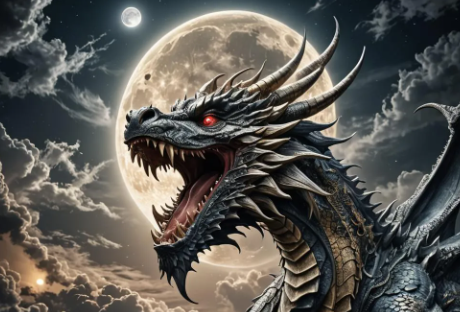
The Maya civilization in Mesoamerica held the belief that lunar eclipses were a result of a jaguar attacking the Moon. They associated the jaguar with darkness and believed that it threatened the Moon’s existence. To protect the Moon, the Maya would participate in rituals involving offerings, prayers, and sacrifices to appease the jaguar and ensure the Moon’s safety.
Ancient Greece, known for its rich mythology, associated lunar eclipses with the Moon being overshadowed by a divine being. According to Greek mythology, the Moon was the goddess Selene and the Sun was the god Helios. During a lunar eclipse, it was believed that Selene was being temporarily obscured by another god or goddess. The Greeks would hold ceremonies and rituals to honor and protect Selene during these events.
In ancient Egypt, lunar eclipses held significant religious and spiritual importance. The Egyptians believed that the Moon, represented by the god Thoth, was temporarily under attack from evil forces during an eclipse. To protect Thoth, they would perform rituals, including loud chanting, music, and offerings, to ensure the Moon’s safe passage through the celestial disturbance.
India’s Hindu religion had an even darker explanation for an eclipse. One legend described how gods and demons collaborated to produce an elixir which promised immortality if consumed. However, Rahu, one of the demons responsible for an eclipse, decided that he would drink it himself, turning the Sun black during its eventful duration.
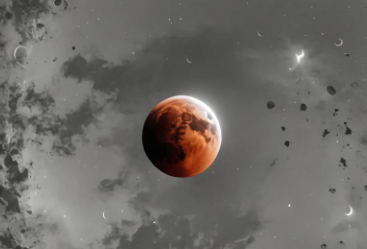
Observing A Lunar Eclipse
Lunar eclipses can be breathtaking sights for those with access to telescopes or binoculars and an open, dark sky. One of the easiest astronomical events to observe, they don’t require special eye protection either! When an eclipse happens, Earth casts its shadow over the Moon which passes into and out of Earth’s shadow as time progresses.
As the Moon moves into the outer part of Earth’s shadow, known as its penumbra, sunlight still reaches its surface. Light with shorter wavelengths (blue and violet) is scattered more easily in Earth’s atmosphere, while longer wavelengths, such as red and orange, produce a reddish-tinged Moon.
As part of a lunar eclipse, the Moon gradually moves into Earth’s deeper shadow, known as umbra, where its light becomes blocked by Earth and only indirect sunlight reaches it via atmospheric diffusion. This produces an orange tint similar to sunrises and sunsets. When entering umbra, however, the Moon takes on an eye-catching coppery or reddish hue due to sunrays being blocked by Earth but refracted through atmosphere, creating more orange tones than normal.
Lunar eclipses can be watched with no special equipment. However, using binoculars or telescopes to magnify and bring out details from the Moon’s surface would enhance your viewing experience. Contrary to solar eclipses, lunar eclipses are considered safe.
Observing A Solar Eclipse
Solar eclipses take place when the Moon passes between Earth and Sun, blocking some or all of its light, turning its face a vibrant reddish hue and giving us an unforgettable view.
To experience its dramatic effect, an eclipse requires that all three bodies, the Moon, Sun, and Earth, to all occupy exactly the same orbital plane at the moment of an eclipse. Unfortunately this is not always possible as the Moon may be too far away from its center to cover it completely.
At present, only observers living along a narrow path across the United States will experience the full glory of solar eclipses. To do this safely and comfortably, specially made viewing glasses are typically the go-to solution. As an alternative, pinhole projection can also be constructed using objects like paper cups and tin foil. However, this provides an inexpensive but less precise image.
When the Moon enters the inner part of Earth’s shadow (known as its umbra), sunlight still reaches it, but its intensity is diminished due to Rayleigh scattering which occurs with all wavelengths of light. As a result, it takes on a reddish tint, leading some people to refer to lunar eclipses as blood moons.
It is important to note that while eclipses can bring about significant shifts, they are not necessarily negative. Although they may bring challenges and shake our foundations, they also offer the opportunity for growth, self-discovery, and personal development. By embracing the transformative energy of an eclipse, we can harness its power to create positive change in our lives.
Content listed below may contain affiliate links.
